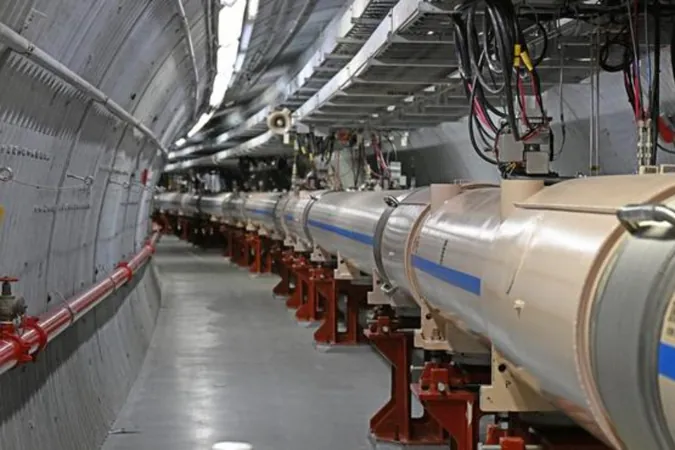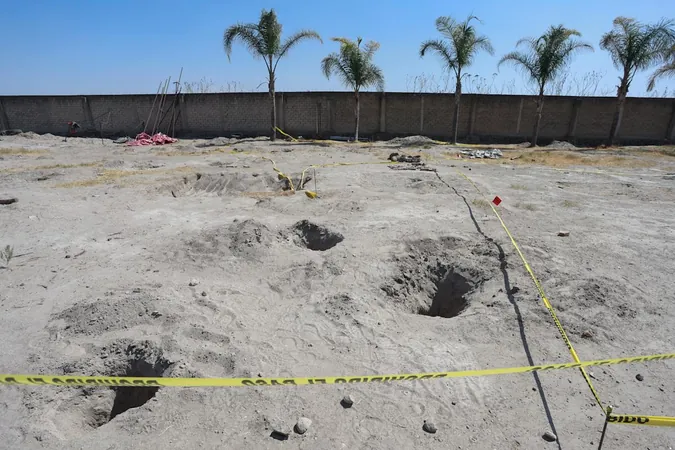
The Epic Conclusion of Brookhaven's 25-Year Particle Collider Adventure
2025-03-28
Author: Wai
Introduction
After an impressive 25 years of groundbreaking research, the Relativistic Heavy Ion Collider (RHIC) at Brookhaven National Laboratory is set to perform its final series of experiments before transitioning to a new frontier in particle physics. This historic collider, celebrated for its historic gold nuclei collisions, launched its final run this week on Long Island, marking the end of an era and the beginning of an exciting new project—the Electron-Ion Collider (EIC).
Final Phase of Experiments
During this concluding phase, which will span into 2025, scientists will complete data collection on quark-gluon plasma—an ancient state of matter believed to have existed just microseconds after the Big Bang. James Dunlop, associate department chair for nuclear physics at Brookhaven Lab, enthusiastically reflected on RHIC's achievements: “The original goal was to recreate a state of matter from the universe's infancy, and we did just that. The properties of quark-gluon plasma were surprisingly different from our initial expectations.”
Unexpected Discoveries
Dunlop likened their findings to boiling water, where one might expect to get steam; instead, the quark-gluon plasma was found to act as an incredibly perfect liquid—an astonishing revelation in the field of particle physics.
Details of the Final Run
In its final run, RHIC will focus on gold-on-gold collisions with energies reaching 200 billion electron volts. Experiments are scheduled through June, with a break during July and August to escape the sizzling summer heat, after which they will proceed to analyze around 10 billion collision events.
Advanced Detection Systems
The collider employs advanced detection systems to optimize results, such as the STAR detector, which will help in identifying characteristics of collisions in real-time, as explained by co-spokesperson Lijuan Ruan. Concurrently, the sPHENIX detector aims to gather data from approximately 50 billion collision events to further investigate the behaviors of quark-gluon plasma.
Collaboration with CERN
Notably, researchers also plan to combine their findings with experiments conducted at CERN’s Large Hadron Collider (LHC), which operates at higher temperatures. This collaboration is expected to deepen their understanding of quark-gluon plasma dynamics as temperatures fluctuate.
Transition to the Electron-Ion Collider
Once RHIC's final data run is complete, the facility will be transformed into the Electron-Ion Collider. This innovative initiative will reuse parts of RHIC while incorporating new technology for electron acceleration. The EIC aims to explore the intricacies inside atomic nuclei, focusing on protons and neutrons, with particular attention to the strong nuclear force—the fundamental force that holds quarks together.
Significance of the Journey
As Jin Huang, co-spokesperson for sPHENIX, remarked, “The journey from RHIC to EIC symbolizes a significant leap in our exploration of nuclear matter, transitioning from the hot, dense states created in heavy-ion collisions to probing the cold nuclear matter with the smallest projectiles available—electrons.
Conclusion
In conclusion, as the RHIC prepares to conclude its remarkable journey, it not only leaves behind a rich legacy of scientific achievement but also paves the way for the future of particle physics with the Electron-Ion Collider. The discoveries made during this final run promise to redefine our understanding of matter and the universe itself. Don’t miss out on what could be the most monumental scientific revelations yet!


 Brasil (PT)
Brasil (PT)
 Canada (EN)
Canada (EN)
 Chile (ES)
Chile (ES)
 Česko (CS)
Česko (CS)
 대한민국 (KO)
대한민국 (KO)
 España (ES)
España (ES)
 France (FR)
France (FR)
 Hong Kong (EN)
Hong Kong (EN)
 Italia (IT)
Italia (IT)
 日本 (JA)
日本 (JA)
 Magyarország (HU)
Magyarország (HU)
 Norge (NO)
Norge (NO)
 Polska (PL)
Polska (PL)
 Schweiz (DE)
Schweiz (DE)
 Singapore (EN)
Singapore (EN)
 Sverige (SV)
Sverige (SV)
 Suomi (FI)
Suomi (FI)
 Türkiye (TR)
Türkiye (TR)
 الإمارات العربية المتحدة (AR)
الإمارات العربية المتحدة (AR)